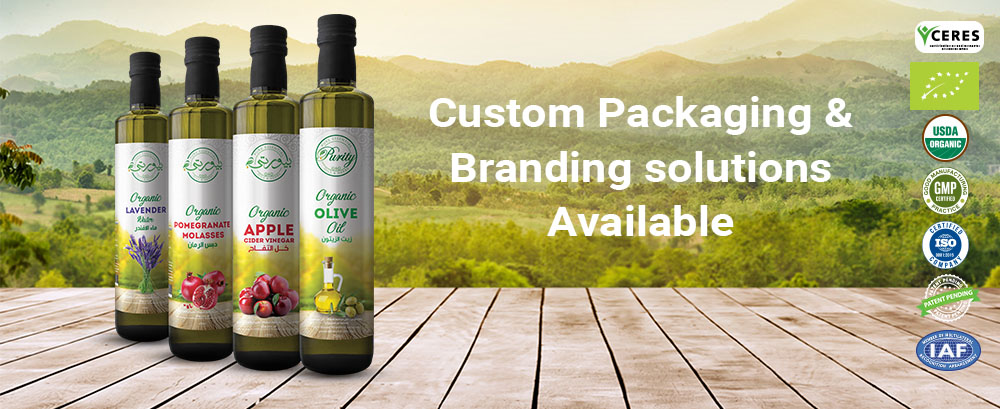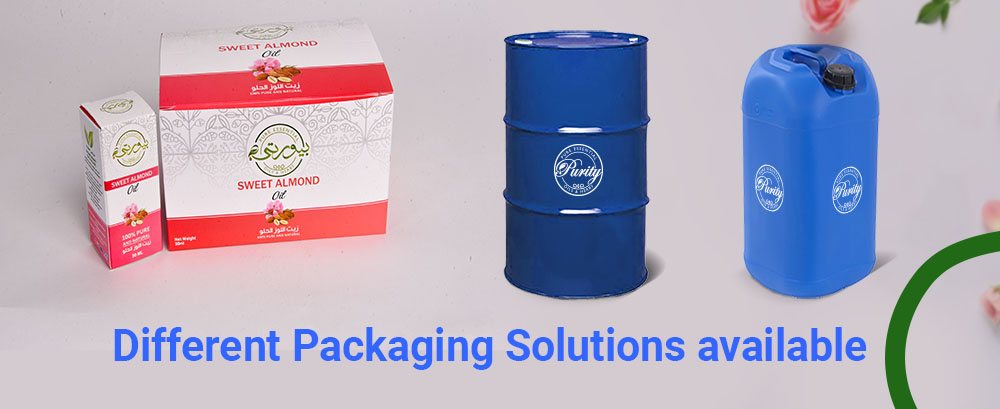Best Seller Items
-
Coconut Oil Organic & Conventional Consumer Pack
Coconut oil comes from the nut (fruit) of the coconut palm. The oil of the nut is used to make medicine. Some coconut oil products are referred to as “virgin” coconut oil. Unlike olive oil, there is no industry standard for the meaning of “virgin” coconut oil. The term has come to mean that the oil is generally unprocessed. For example, virgin coconut oil usually has not been bleached, deodorized, or refined.
Some coconut oil products claim to be “cold pressed” coconut oil. This generally means that a mechanical method of pressing out the oil is used, but without the use of any outside heat source. The high pressure needed to press out the oil generates some heat naturally, but the temperature is controlled so that temperatures do not exceed 120 degrees Fahrenheit.
People use coconut oil for eczema (atopic dermatitis). It is also used for scaly, itchy skin (psoriasis), obesity, and other conditions, but there is no good scientific evidence to support these uses.
How does it work ?
Coconut oil contains a certain kind of fat known as “medium chain triglycerides.” Some of these fats work differently than other types of saturated fat in the body. When applied to the skin, coconut oil has a moisturizing effect.Login to view pricesCoconut Oil Organic & Conventional Consumer Pack
Login to view prices -
Argan Oil Organic & Conventional Consumer Pack
Argan oil is made from the kernels that grow on the argan trees native to Morocco. It’s most frequently sold as pure oil, which can be directly applied topically (directly to the skin) or ingested in order to provide several health benefits. It comes in supplement capsule form to be taken by mouth. It’s also commonly mixed into a number of cosmetic products like shampoos, soaps, and conditioners.
Argan oil has traditionally been used both topically and orally to improve the health of skin, hair, and nails. It contains a number of different beneficial properties and vitamins that form a powerful combination to boost skin health.
Argan oil has been a culinary staple in Morocco for centuries — not only because of its subtle, nutty flavor but also its wide array of potential health benefits. This naturally occurring plant oil is derived from the kernels of the fruit of the argan tree.
Although native to Morocco, argan oil is now used across the globe for a variety of culinary, cosmetic and medicinal applications.Login to view pricesArgan Oil Organic & Conventional Consumer Pack
Login to view prices -
Olive Oil Organic & Conventional Consumer Pack
Olive oil is a liquid fat obtained from olives a traditional tree crop of the Mediterranean Basin. The oil is produced by pressing whole olives. It is commonly used in cooking, whether for frying or as a salad dressing. It is also used in cosmetics, pharmaceuticals, and soaps, and as a fuel for traditional oil lamps, and has additional uses in some religions.
The phytonutrient in olive oil, oleocanthal, mimics the effect of ibuprofen in reducing inflammation, which can decrease the risk of breast cancer and its recurrence. Squalene and lignans are among the other olive oil components being studied for their possible effects on cancer.Login to view pricesOlive Oil Organic & Conventional Consumer Pack
Login to view prices -
Tagette Marigold Tagetes minuta Essential Oil
Common name: Mexican Marigold
Latin name: Tagetes minuta L.
Family: Asteraceae (Compositae)
Other names: English: Aztec marigold, dwarf marigold, khaki-bush, Mexican marigold, Muster John Henry, stinking-Roger, stinkweed, wild marigold; Spanish: chinchilla enana; Hawai‘I: ‘ōkole‘oi‘oi; Bot. syn.: Tagetes glandulifera Schrank.
The common term “marigold” embraces a diversity of plants with golden flowers, most of which belong to the family Compositae. Prominent among the marigolds are various species of Tagetes.
Login to view pricesTagette Marigold Tagetes minuta Essential Oil
Login to view prices
-
Neroli Citrus aurantium Flower Essential Oil
Common name: Bitter Orange
Latin name: Citrus aurantium L.
Family: Rutaceae.
Other names: Engl.: bitter orange, sour orange, bigarade, bigarade orange, Seville orange. Deu.: Bitterorange, Bittere Orange, Pomeranze. Suom.: pomeranssi, hapanappelsiini. Sven.: pomerans. Fran.: bigarade, bigardier, oranger amer. Span.: naranja agria, naranja amarga. Pharm.: aurantii amari cortex, aurantii flores , folia aurantii, fructus aurantii, oil of neroli, oil of petit-grain, oleum neroli. Bot. syn.: Citrus amara Link, Citrus aurantium L. var. amara L., Citrus bigaradia Duhamel, Citrus bigarradia Loisel., Citrus vulgaris Risso.
Login to view pricesNeroli Citrus aurantium Flower Essential Oil
Login to view prices -
Jasmine Jasminum officinale Absolute Oil
Common name: Jasmine
Latin name: Jasminum officinale L.
Family: Oleaceae
Other names: Arab.: Yasmin or Ysmyn (Origin of Jasmine name); Engl.:Common White Jasmine, Poet’s Jasmine, Persian: Jessamine, Sp.: jazmin China: Yeh Hsi Ming Botan.: Jasminum grandiflorum, Jasminum officinale var. grandiflorum.
Two types of jasmine are used for the extraction of oil. Some botanists describe them as two distinct species: J. grandiflorum and J. officinale, while others consider J. grandiflorum to be a variety of officinale. The oil of the two flowers is virtually identical.
Poet’s jasmine: (White Jasmine) Jasminum officinale L.
Royal jasmine: (Catalonian and Spanish jasmine) Jasminum grandiflorum L.
Login to view pricesJasmine Jasminum officinale Absolute Oil
Login to view prices -
Fennel Seeds Foeniculum vulgare Essential Oil
Common name: Fennel
Latin name: Foeniculum vulgare Miller.
Family: Apiaceae (Umbelliferae)
Other names: Engl.: fennel, bitter fennel, common fennel, garden fennel, wild fennel. Deu.: Fenchel, Gewürzfenchel. Suom.: maustevenkoli, salaattifenkoli, saksankumina, venkoli. Sven.: fänkål, besk fänkål, bitter fänkål, kryddfänkål, tysk fänkål, vanlig fänkål. Fran.: fenouil. Bot. syn.: Anethum foeniculum L., Foeniculum capillaceum Gilib., Foeniculum dulce Mill., Foeniculum foeniculum (L.) Karst., Foeniculum officinale All., Foeniculum panmoricum DC., Foeniculum piperitum (Ucria) C. Presl., Foeniculum vulgare Gaertn., Meum foeniculum Spreng.
Login to view pricesFennel Seeds Foeniculum vulgare Essential Oil
Login to view prices -
Dill Herb Anethum graveolens Essential Oil
Common name: Dill
Latin name: Anethum graveolens L.
Family: Apiaceae (Umbelliferae)
Other names: Engl.: dill. Deu.: Dill, Gurkenkraut. Suom.: tilli. Sven.: dill. Fran.: aneth, faux anis, fenouil bâtard. Bot. syn.: Anethum sowa Roxb. ex Flem., Peucedanum graveolens (L.) Benth. & Hook. f., Peucedanum graveolens Hiern., Peucedanum sowa Roxb. ex Flem..
Description:
Dill is a hapaxanthic annual herb very similar in appearance and structure to fennel, that reaches a height of 3 to 4 ft (0.9 – 1.2 m) at maturity. It has finely cut ferny leaves that appear quite feathery, and small, yellowish-green flowers are borne in umbels. The plant usually consists of a single stalk, with hollow stems and blue-green foliage.
Login to view pricesDill Herb Anethum graveolens Essential Oil
Login to view prices -
German Chamomile Blue Matricaria chamomilla Essential Oil
Common name: German Chamomile
Latin name: Matricaria recutita L..
Family: Asteraceae (Compositae)
Other names: Engl.: German chamomile, scented mayweed, chamomile, false chamomile, German tea chamomile, Hungarian chamomile, sweet chamomile. Deu.: Echte Kamille, Kamille, Frauenblume, Johannisköpfchen, Mägdeblume, Ramerian. Suom.: kamomillasaunio. Sven.: kamomill, sötblomster, äkta kamomill. Fran.: camomille. Bot. syn.: Chamomilla officinalis Koch, Chamomilla recutita (L.) Rauschert, Chrysanthemum chamomilla Bernh., Matricaria chamomilla auct..
This plant was formerly classified as Matricaria chamomilla L.
Login to view pricesGerman Chamomile Blue Matricaria chamomilla Essential Oil
Login to view prices -
Celery Seed Apium graveolens Essential Oil
Common name: Celery
Latin name: Apium graveolens L
Family: Apiaceae (Umbelliferae)
Other names: Arabic: Karfas, Karafs; Czech: Celer; German: Sellerie, Eppich; English: Celeriac; French: Céleri ; Spanish: Apio; Swedish: Selleri
Description:
Apium graveolens L, the common celery, is a hapaxanthic herb, grown as a biennial and, unde certain conditions, as an annual.
From the beet-like tap-root (the uppermost part being a shoot) with its fibrous sideroots rises an aerial stem, 2 to 3 ft. high, branched and leafy, which bears compound umbels of small white flowers. The small fruit (or seed, as it is called commercially) consists of an ovate, dark brown cremocarp.
Possessing a characteristic, agreeable odor and a warm, aromatic, somewhat pungent taste, it is employed as condiment in the flavoring of food products. The seed also serves as birds’ food. The volatile or essential oil distilled from celery seed is used extensively for flavoring purposes.
Login to view pricesCelery Seed Apium graveolens Essential Oil
Login to view prices -
Coriander Coriandrum sativum Essential Oil (Seed & Herb)
Common name: Coriander.
Latin name: Coriandrum sativum L.
Family: Apiaceae (Umbelliferae)
Other names: Arab: kuzbara, kuzbura; Armenian:chamem; Chinese: yuan sui, hu sui; Czech: koriandr; Danish: koriander; Dutch: koriander; English: coriander, collender, chinese parsley; Ethiopian: (Amharic) dembilal; French: coriandre, persil arabe; Georgian (Caucasus): kinza, kindza, kindz; German: Koriander, Wanzendill, Schwindelkorn; Greek: koriannon, korion; Hindi: dhania, dhanya; Hungarian: coriander; Italian: coriandolo; Japanese: koendoro; Malay: ketumbar; Persian: geshnes; Polish: kolendra; Portugese: coentro; Rumanian: coriándru; Russian: koriandr, koljandra, kišnec, kinza, vonjučee zel’e, klopovnik; Sanskrit: dhanayaka, kusthumbari; Serbokroatian: korijander; Spanish: coriandro, cilantro, cilandrio, culantro; Swiss: Chrapfechِörnli, Böِbberli, Rügelikümmi; Turkish: kişniş
Login to view pricesCoriander Coriandrum sativum Essential Oil (Seed & Herb)
Login to view prices -
Caraway Seeds Carum carvi Essential Oil
Common name: Caraway
Latin name: Carum carvi L.
Family: Apiaceae (Umbelliferae)
Other names: Engl.: caraway, annual caraway, caraway seed. Deu.: Kümmel, Gemeiner Kümmel, Wiesen-Kümmel. Suom.: kumina. Sven.: kummin. Fran.: anis des vosges, carvi, cumin des prés
Login to view pricesCaraway Seeds Carum carvi Essential Oil
Login to view prices -
Anise Pimpinella anisum Essential Oil
Common name: Anise
Latin name: Pimpinella anisum L.
Family: Apiaceae (Umbelliferae)
Other names: Engl.: anise, anise burnet saxifrage, aniseed. Deu.: Anis. Suom.: anisruoho, anis. Sven.: anis. Fran.: anis, anis vert.
It should be differentiated from the so-called star anise, Illicum verum Hooker f. (fam. Magnoliaceae). It contains oils of similar chemical composition and, therefore similar odor flavor, and utilization. It is a small evergreen tree or bush, native to China.
Anise oil is sometimes adulterated with star anise oil, fennel oil, or synthetic anethole.
Anise-hyssop (Agastache foeniculum formerly Agastache anethiodora), is a perennial plant of the Lamiaceae family, native to the United States, which has a characteristic anise scent and flavor. Common names for this plant include Korean mint or anise mint.
Login to view pricesAnise Pimpinella anisum Essential Oil
Login to view prices -
Garlic Allium Sativum Essential Oil
Common name: Garlic
Latin name: Allium sativum L.
Family: Liliaceae
Other names: Engl.: garlic, English garlic, poor man’s treacle. Deu.: Knoblauch, Alterswurzel, Knobloch, Knofel, Stinkerzwiebel. Suom.: valkosipuli. Sven.: vitlök. Fran.: ail, ail blanc, ail cultivé. Span.: ajo.
Login to view pricesGarlic Allium Sativum Essential Oil
Login to view prices -
Cumin Seeds Cuminum cyminum Essential Oil
Latin name: Cuminum cyminum L.
Family: Apiaceae (Umbelliferae)
Other Names: Engl.: cumin, green cumin, jeera, white cumin. Deu.: Kreuzkümmel, Mutterkümmel, Römischer Kümmel, Weisser Kreuzkümmel. Suom.: roomankumina, juustokumina, maitokumina. Sven.: spiskummin, romersk kummin, vit kummin. Fran.: cumin. Span.: comino. Bot. syn.: Cuminum odorum Salisb Cumin, Cuminum cyminum L., also known as Cuminum odorum Salisb
Description:
Cuminum cyminum L. is a slender, rather pretty annual growing to a height of 1 ft. or less and bearing very finely divided leaves. The aromatic, dried ripe fruits (seeds) are of elongated, oval shape, about 5 to 6 mm long, and light brown in color.
Login to view pricesCumin Seeds Cuminum cyminum Essential Oil
Login to view prices -
Basil Ocimum basilicum Essential Oil (Linalol & Methyl Chavicol types)
The world market for basil oil is dominated by two main types, the European and Egyptian basil oils.
- The European sweet basil, cultivated and distilled in Europe, the Mediterranean region, and the United States is considered to be of the highest quality, producing the finest odor. Characteristically, the essential oil from this basil contains high concentrations of linalool and methylchavicol (estragole), at a ratio of 2 or 3:1. Other constituents found in low concentrations include: 1,8-cineole, eugenol, alpha-terpeniol, beta-caryophyllene, geraniol, sabinene, alpha-phellandrene, gamma-terpinene, thujone, myrcene, limonene, ocimene, and para-cymene.
- The Egyptian basil oil is very similar to the European but with a higher concentration and ratio of methylchavicol relative to linalool.
Login to view pricesBasil Ocimum basilicum Essential Oil (Linalol & Methyl Chavicol types)
Login to view prices





